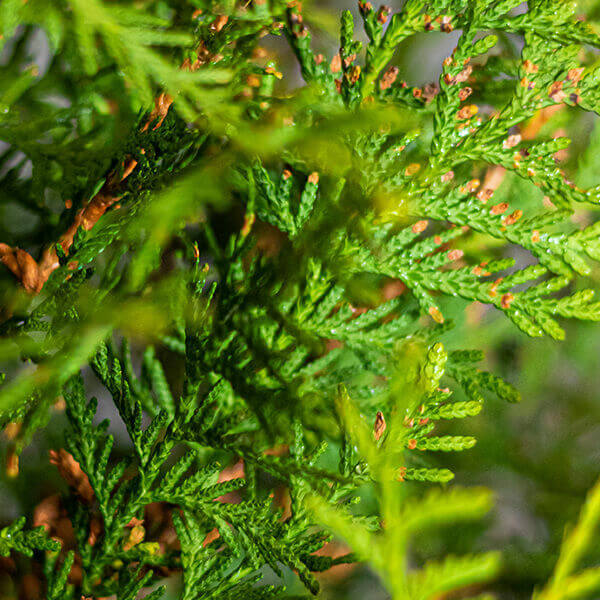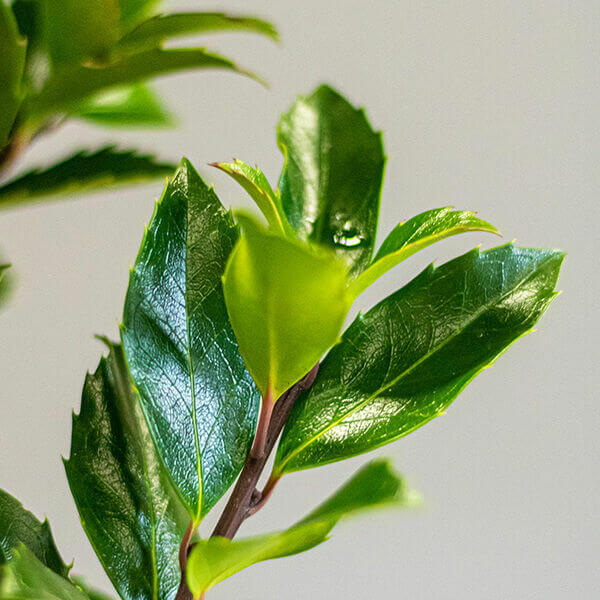Hedge Plants For Security And Privacy
Hedge Plants For Security And Privacy
Blog Article
Best Hedging Plants For Fall Foliage
Improve your garden's attraction with rich hedge varieties such as Yew (Taxus), Thuja, Laurel, Photinia, and Bamboo, commemorated for their structural integrity and ecological benefits.
Yew and Thuja supply evergreen coverage and winter strength, while Laurel offers quick growth and broad, aromatic leaves.
Photinia adds seasonal charm with its lively red foliage, and Bamboo lends a low-maintenance, tranquil ambiance.
These hedges improve air quality, lower noise, and create tranquil, personal spaces.
Proper planting, spacing, and upkeep make sure vigorous development and ecological consistency.
Explore how these lavish ranges can elevate your garden's charm and wellness.
Secret Takeaways
Change Your Garden With Lush Hedge Varieties
- Select Yew for its dense, evergreen growth and unparalleled longevity.
- Go with Laurel for its fast growth and broad leaves, guaranteeing quick personal privacy.
- Pick Photinia for its vibrant seasonal foliage, which turns a striking dark red.
- Use Bamboo for a low-maintenance, winter-hardy hedge with visual appeal.
- Area plants 2-3 per meter and prune frequently for optimum development and health.
Popular Hedge Plants
When changing a garden with lush hedge varieties, it's important to think about popular hedge plants such as Yew, Thuja, Laurel, and Photinia due to their special characteristics and advantages.
Yew (Taxus) is extremely esteemed for its durability and dense, green development, making it a prime option for enduring landscapes.
Thuja is kept in mind for its evergreen foliage and robust winter resilience.
Photinia adds seasonal vibrancy with red leaves that darken in time, producing dynamic visual appeal.
Laurel provides rapid growth and fragrant, broad leaves, ideal for fast personal privacy.
In Addition, Bamboo is an exceptional option for atmosphere, providing a low-maintenance, winter-hardy choice that improves the garden's aesthetic with its elegant, swaying walking canes.
These selections cater to a variety of horticultural requirements and choices.
Benefits of Garden Hedges
Garden hedges offer a multitude of advantages, making them an important addition to any landscape. These natural barriers are economical to execute and provide substantial wind security, enhancing air blood circulation and contributing to sound decrease. The dense foliage of hedges like Thuja and Beech ensures personal privacy by obstructing presence, producing a remote and serene environment.
Hedges likewise play an important role in microclimate guideline, offering a steady environment that promotes plant growth and minimizes temperature level variations. Their elaborate leaf structures filter toxins, improving air quality and adding to a healthier garden ecosystem.
Furthermore, hedges excel in sound reduction, soaking up and deflecting sound waves to lower ambient sound levels. This dual functionality of supplying both visual and acoustic personal privacy enhances the general tranquility and aesthetic appeal of any garden.
Planting and Upkeep Tips
For a successful hedge, precise preparation of the planting location is crucial. Guarantee the soil has correct pH and drainage to support strong root development.
Area the plants properly for the chosen species. Water the hedge often throughout its initial growth stage, adjusting as required with seasonal modifications.
Implement a methodical insect control and illness avoidance strategy, using natural or chemical treatments when necessary. Regularly examine for aphids, termites, and fungal infections.
Apply mulch to maintain moisture and suppress weeds. Seasonal pruning promotes dense growth and air flow, necessary for plant health.
Following these standards will assist you cultivate a vibrant, well-maintained hedge that improves the charm of your garden.
Spacing and Cutting Standards
Spacing and Cutting Guidelines
Proper spacing and trimming are essential for cultivating healthy, visually appealing hedges. Sufficient spacing guarantees each plant receives adequate nutrients, light, and air flow.
Follow these guidelines for ideal hedge maintenance:
- Spacing: Position hedge plants 2-3 plants per meter to motivate robust development.
- Pruning Methods: Routine pruning is vital for maintaining desired hedge height and shape. Trim new development in summer season and cut down older wood throughout winter season.
- Seasonal Care: Change trimming schedules and approaches according to seasonal requirements to make sure plant health.
- Hedge Height: Frequently display and cut to preserve the desired hedge height and achieve consistent looks.
Following these steps will guarantee your hedge prospers, improving both the appeal and functionality of your garden.
Picking the Right Hedge
Picking the Right Hedge
Choosing the appropriate hedge includes evaluating factors such as fully grown height, foliage density, and Additional reading environmental durability. Effective hedge plant selection needs comprehending each species' growth attributes and site-specific versatility.
For example, Yew (Taxus) uses outstanding durability and thick growth, while Thuja is notable for its winter season resilience. In addition, considering upkeep requirements is essential; fast-growing types like Laurel or Privet demand routine trimming, whereas low-maintenance choices like Bamboo or Ivy might be more effective for those looking for very little upkeep.
Ecological elements such as soil type, light availability, and moisture conditions need to likewise guide the selection process. This cautious approach guarantees the chosen hedges will prosper, providing both functional and visual advantages to the garden landscape.
Delivery and Planting Suggestions
To guarantee your hedge plants flourish, they must be delivered by specialized couriers and planted without delay upon arrival.
Follow these important actions for successful planting:
- Soil Preparation: Improve the soil with organic matter to improve drainage and nutrient material.
- Planting Depth: Develop a trench twice the width and equal to the depth of the root ball.
- Watering Methods: Water completely after planting, keeping the soil regularly moist but not saturated.
- Mulching: Apply a layer of mulch to keep wetness and suppress weeds.
Customer Support and Service
Provided the vital function of timely assistance in horticultural pursuits, our customer support team is offered six days a week through telephone, email, and social networks to use skilled advice and swiftly deal with any concerns. Their dedication to quick response times guarantees customer complete satisfaction by dealing with inquiries associated with plant health, ideal planting techniques, and upkeep schedules.

Availability
Email
This comprehensive support system, enhanced by an excellent 9.3/ 10 customer rating, highlights our commitment to boosting the gardening experience for every single client.
Frequently Asked Questions
The Length Of Time Does It Consider Hedge Plants to Establish?
Hedge plants generally require one to three years to become completely developed, with the exact duration varying by species and growing conditions.
Efficient care during this crucial period is vital for robust growth. Constant watering, vigilant weed control, and proper fertilizer application are pivotal in promoting strong root advancement.
For instance, fast-growing species like Laurel might develop quicker, while slower-growing ranges such as Yew might take longer. Persistent maintenance accelerates the facility procedure, resulting in healthy and thick hedges.
What Are the very best Hedge Plants for Personal Privacy?
The concern of the very best hedge plants for privacy includes examining evergreen and deciduous options.
Evergreen hedges like Thuja, Laurel, and Cypress offer year-round protection, ensuring continuous personal privacy.
On the other hand, deciduous hedges such as Beech use seasonal privacy, shedding leaves in chillier months.
Key upkeep ideas for personal privacy hedges consist of routine cutting, fertilizing in spring, and proper spacing-- typically 2 to 3 plants per meter.
Furthermore, consistent watering and persistent weed removal are essential for promoting healthy, dense growth.
Can Hedge Plants Draw In Wildlife to My Garden?
Yes, hedge plants can bring in wildlife to your garden by supplying essential benefits like shelter, food, and nesting sites, thus improving local biodiversity. For example, yew, holly, and laurel are outstanding for attracting birds, while ivy supports a variety of insects.
Nevertheless, it is necessary to note that there are some drawbacks, such as increased upkeep to handle insects and regular maintenance. Thoroughly choosing and maintaining hedge ranges can help balance these downsides and advantages, ultimately cultivating a sustainable and dynamic ecosystem in your garden.
Exist Any Flowering Hedge Plants Available?
Yes, there are flowering hedge plants available that can improve the beauty of your garden.
For instance, Elaeagnus, also referred to as Olive Willow, produces fragrant white flowers in the fall, adding a touch of beauty.
Photinia, another popular choice, showcases lively red leaves that mature into an abundant green, creating a vibrant visual effect throughout the seasons.
To make sure these plants thrive, it's necessary to practice appropriate pruning strategies and seasonal maintenance, such as cutting brand-new growth in the summertime and cutting down in the winter.
These steps will assist maintain the health and visual appeal of your blooming hedges.
How Do I Avoid Pests in My Hedge Plants?
To prevent insects in hedge plants, use natural insect control approaches and maintain appropriate hedge care. Present beneficial bugs like ladybugs, which victimize harmful insects, to produce a well balanced ecosystem.
Regularly examine your hedges for indications of problem and quickly get rid of any afflicted parts to avoid the spread. Make sure the health of your hedges by using balanced fertilizers and providing adequate water.
Use mulching to keep soil moisture and appropriate spacing to minimize plant tension and promote robust development. These practices jointly assist in lessening bug concerns and keeping a healthy hedge.
Conclusion
In essence, picking the ideal hedge ranges such as Yew, Thuja, and Laurel can change any garden into a relaxing haven. These plants provide year-round greenery, enhance visual appeal, and deal useful benefits like noise reduction and wind defense.
Correct planting methods, accurate spacing, consistent watering, and seasonal cutting are essential for ideal growth.
Trustworthy delivery services and expert customer assistance guarantee a seamless experience from purchase to planting, making it easier than ever to raise your outdoor area.
Garden hedges provide a wide range of benefits, making them an important addition to any landscape. These natural barriers are economical to implement and supply considerable wind protection, improving air circulation and contributing to sound reduction. The thick foliage of hedges like Thuja and Beech guarantees personal privacy by obstructing presence, creating a serene and remote environment.

Pruning Strategies: Routine pruning is essential for keeping wanted hedge height and shape. Cut new growth in summer and cut back older wood throughout winter season.
Report this page